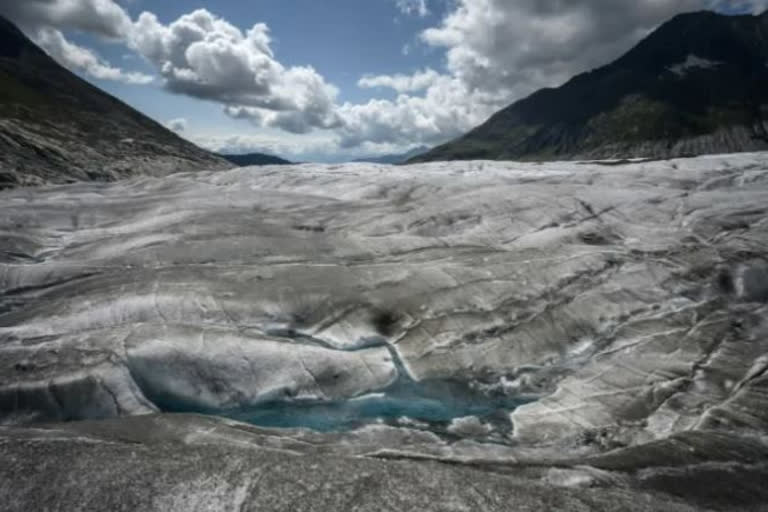New Delhi: Being aware of the occasional glacial lake outbursts in India's hilly and mountainous places, the Union Ministry of Water Resources has decided to work in coordination with the different agencies involved in glacial management and analyzing the mountain hazards by sharing data with them.
A senior official from the water resource ministry said that Defence Geo-informatics Research Establishment (DGRE) is also working on the latest model for forecasting jointly developed with Swiss Federal Institute for Snow and Avalanche Research (SFISAR).
"DGRE is now working out to enhance a number of Automatic Weather Stations for avalanche and landslide in a phased manner to increase the coverage area in Himachal Pradesh, Uttarakhand, Sikkim, Arunachal Pradesh, Jammu & Kashmir, and Ladakh. A network of Automatic Weather Stations and manual observations op is also coming up in the state of Sikkim, primarily to generate avalanches forecast for the armed forces," the official said.
All efforts are being made to widen the hydro-meterological network including Real Time Data Acquisition System (RTDAS) throughout the country, the official added. "The Central Water Commission (CWC) identifies the stations and continuously advises the State government for confirmation so as to expand the network in each plan period," he said.
At present, CWC has 46 existing metrological observation stations in the Himalayan region (1,000 meters above MSL) out of which 35 stations are telemetry-based stations. Additionally, 16 telemetry-based metrological observation stations have also been proposed (1,000 meters above MSL) in the Himalayan region, which are under various stages of implementation.
Also read: Uttarakhand glacier outbursts: Scientists warn of lakes formed after glacier melting
The DGRE has already established three mountain metrological centres (MMC) located at Sasoma in Ladakh, Srinagar in J&K, and Auli in Uttarakhand for avalanche study. "DGRE is using state-of-the-art sensors and technologies available world over for mitigating the avalanche hazards. The data received from the observatory and weather stations at MMC is used in avalanche and weather forecasting for armed forces," the official said.
Emphasising the need for a nodal agency for inter-agency coordination to streamline the efforts of different agencies for glacial management, the official said that studies on glacial research, glacial monitoring, and mountain hazards also require multidisciplinary experts and well-integrated programme.
"There are 9,575 glaciers in the Indian Himalayan region. Monitoring of such a large number of glaciers requires a coordinated effort with huge manpower and logistics," the official said.
Talking about the development, renowned disaster management expert and commandment at the National Disaster Response Force (NDRF), Vadodara, VVN Prasanna Kumar told ETV Bharat that working together in coordination with the different agencies involved in glacial management is necessary to minimise the impact of any glacial outbursts.
"Such coordination is very much necessary in view of cloud bursts and saving the people living along the river banks," said Prasanna. Suggesting that in mountain areas, this coordination is necessary, Prasanna said that cloud bursts are increasingly happening in hilly and mountain areas.
"At present IMD, central water commission, dam management authorities, and local administrations are working in this direction. If we get more coordination with different agencies involved in glacial management, the result will be far better," Prasanna said. Himalayan States of Uttarakhand, Himachal Pradesh, and Jammu & Kashmir are presently worst affected by glacial lake outbursts.



